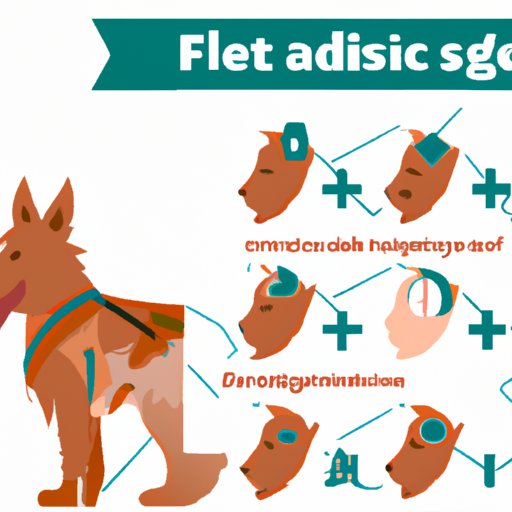
How to Stop Seizures in Dogs Immediately: A Comprehensive Guide
Seizures can be a scary experience for any pet owner. Watching your beloved dog have a seizure can be overwhelming, leaving you feeling helpless and unsure of what to do. However, it’s crucial to know how to handle a seizure in your dog to provide immediate help. In this article, we will take a closer look at how to prevent and manage seizures in dogs.
Recognizing the Signs of a Seizure
Seizures in dogs can manifest in many ways, and it’s essential to be able to recognize the signs of a seizure to act immediately. Common signs include:
– Uncontrolled shaking movements
– Loss of consciousness
– Stiffening of the body
– Loss of control of the bladder and bowel
– Dazed look
– Chomping or foaming at the mouth
It’s crucial to take note of when a seizure happens and how long it lasts. These notes can help you and your vet determine if there is a pattern to the seizures, making the cause easier to determine.
First-Aid Techniques for Managing Seizures in Dogs
If your dog has a seizure, there are some first-aid techniques you can use to help them through the situation.
1. Stay Calm: As challenging as it may be, it’s essential to stay calm when your dog is having a seizure to prevent panic.
2. Clear the Area: Immediately move any objects away from your dog that could cause injury.
3. Hold and soothe your dog: It’s crucial to hold your dog and gently talk to them during the seizure, providing a calming presence.
4. Prevent choking: If your dog is drooling or vomiting, turn them on their side and clear their mouth with your fingers to prevent choking.
5. Time the seizure: Keep track of the time the seizure starts and how long it lasts.
Remember to avoid restraining your dog, putting objects in their mouth, or moving them during the seizure. These actions can lead to an increased risk of injury.
Medications and Natural Remedies for Preventing Seizures
Fortunately, options exist that can help prevent seizures in dogs. Medications, such as phenobarbital or potassium bromide, can be prescribed by a veterinarian to help control seizures caused by epilepsy.
Natural remedies, including CBD oil or a ketogenic diet, can also be used in conjunction with medications to manage seizures. Always discuss these options with your veterinarian before trying any new treatment.
Dietary Changes to Support Overall Health
Dietary changes can also be made to support a dog’s overall health as they deal with the challenges of epilepsy. Higher protein diets can help stabilize blood sugar and provide energy. Lower carbohydrate diets may also be helpful because carbohydrates can cause negative effects on brain health, potentially triggering more seizures.
The importance of working with a licensed pet nutritionist and/or veterinarian cannot be overstated when considering dietary changes for a dog with epilepsy.
When to Seek Emergency Veterinary Care
Knowing when to seek emergency veterinary care is essential when dealing with seizures in dogs. If your dog experiences a seizure for more than five minutes or has multiple seizures in a row, seek immediate veterinary care.
When you arrive at the veterinary clinic, the vet will likely start by prescribing some medication to stop the seizure and make a diagnosis to prevent future seizures.
Long-Term Management Strategies
Once your vet makes a diagnosis, they will outline a treatment plan that may include dietary changes, medications, and behavioral modifications. However, it’s essential to monitor your dog’s seizures regularly, to detect any changes.
Regular vet check-ups and bloodwork can assess how well a dog’s seizure management plan is working. Proper exercise, environmental stress reduction, and regular monitoring can also reduce seizure frequency and severity over time.
Conclusion
Managing seizures in dogs can be challenging, but it’s possible with proper attention and care. Recognizing the signs of a seizure, knowing first-aid techniques, and working with your vet to create a treatment plan can make all the difference in managing a dog’s epilepsy.
Always keep in mind that each dog is unique, and what may work for one dog may not for another. However, don’t be afraid to experiment with different tactics and therapies to determine what works best for your dog. With patience, persistence, and proper management, dogs with epilepsy can lead happy, healthy lives.




